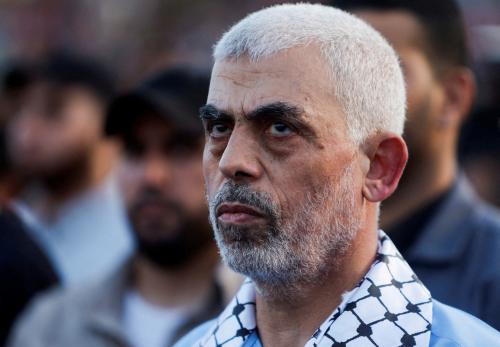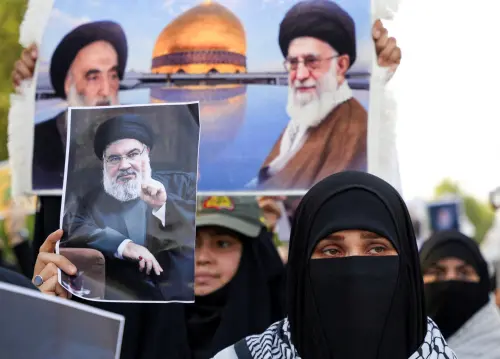Abstract
On May 9, 2008, following the orders of Hezbollah chief Hassan Nasrallah, Lebanese Shia militiamen launched a series of armed assaults in Beirut and plunged parts of the country into sectarian confrontations reminiscent of the 1975-90 civil war. In one swoop, Hezbollah (the Party of God) took control of the western sector of Lebanon’s capital, subdued the Druze part of the Mount Lebanon region, and pursued operations in the North to reopen the highway to Damascus after pro-government gunmen had closed it.
Within half a day, the battle of Beirut was over, and no one doubted that Hezbollah would emerge as the victor. The temporary but forceful seizure of West Beirut surprised sympathizers and enemies of Hezbollah alike. After all, this was an organization that has been fixated on fighting Israel ever since it was born. Using arms internally to advance political objectives, the argument went, was something Hezbollah would try very hard to avoid, given the potential consequences for the group’s legitimacy and popularity. But they did it. Surely, Hezbollah’s tour de force did not come out of the blue. It took place in the context of an 18-monthpolitical crisis that pitted Hezbollah and its allies in the opposition against the pro-U.S. governing coalition (dubbed the March 14coalition). Nasrallah’s decision to unleash his men on the streets of Beirut was specifically triggered by the Lebanese government’s issuing of two “controversial” directives on May 6 that, according to Nasrallah, were aimed at undermining his organization’s military autonomy. The first called for an investigation of Hezbollah’s private fixed-line communications network. The second sought to fire Beirut international airport’s security chief, Walid Shuquair, a man close to Hezbollah. In a speech on May 8, Nasrallah denounced the Lebanese government’s decisions and viewed them as tantamount to a declaration of war. His party, he said, would “cut off the hand” that dared to touch his organization’s arms. After two weeks of sectarian fighting across the country, the government offered to suspend the two decisions and put them in the hands of the Lebanese army command. This compromise set the stage a few days later for a more comprehensive political deal between the warring factions. Signed in Doha on May 21 and welcomed by the United States, Saudi Arabia, Iran and Syria, the deal brought a new head of state to Lebanon, revised the country’s electoral formula, reactivated its parliament and other state institutions, and gave its severely battered economy a chance to heal.
Hezbollah’s military victory, however, comes with long-term political costs. As a result of its violent behavior in Beirut, Hezbollah today scores very low on the popularity scale in Lebanon. More political actors and parties now genuinely distrust and fear the Shia group and view it as the only remaining obstacle to the process of state rebuilding and democracy consolidation that started after Syria withdrew its troops from Lebanon in April 2005. Furthermore, the majority of non-Shia Lebanese accuse it of doing Iran’s bidding on Lebanese soil and at the expense of Lebanese interests. No one in Lebanon, least of all members of the Sunni community, will soon forget what happened in Beirut. The country-wide sectarian clashes were troubling far beyond Lebanon’s borders. Lebanon, long an arena for competing regional interests, has become one of a number of political and military battlefields where the United States and its Arab allies compete against Iranian-backed interests. The United States sees the moderate, Western-leaning government led by Prime Minister Fouad Siniora as a model for the region; Iran, which nurtured Hezbollah from its birth, considers the Lebanese guerilla group an important strategic asset. The White House condemned Hezbollah’s offensive in Beirut, saying that the militant group had turned “its arms against the Lebanese people and challenged Lebanon’s security forces for control of the streets.” After 25 years of repeated assurances by Nasrallah not to use his organization’s weapons domestically, why did Hezbollah feel the need to turn its arms against fellow Lebanese today? What drove Hezbollah to make that decision, and which internal and external factors influenced its decision-making process? Would Hezbollah do it again, should it feel threatened by its political adversaries? Or was this another gross miscalculation, like its decision in summer 2006 to abduct two Israeli soldiers from inside the Blue Line, an event that triggered a 34-day destructive war with Israel? Finally, what is the future of Hezbollah in Lebanon? Has the goal of disarming or taming the organization become more distant than ever?
Read the full article » (subscription required)



Commentary
Rethinking Hezbollah’s Disarmament
September 12, 2008